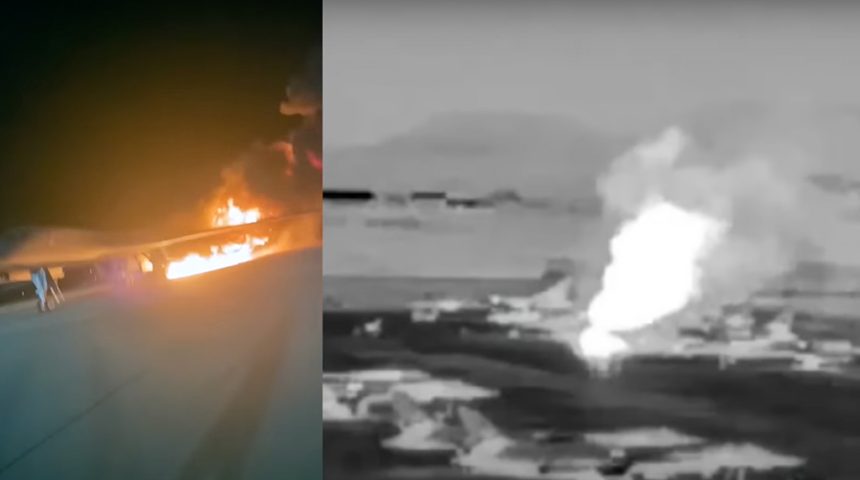Footage shows B-1 experiencing a catastrophic engine failure during a ground run-up at Dyess Air Force Base, Taylor County, Texas.
The footage in this post is interesting. It shows what happened on Apr. 20, 2022, when a U.S. Air Force B-1B Lancer bomber of the 7th Bomb Wing, serial 85-0089, experienced a catastrophic engine failure and fire on a the #1 engine while undergoing maintenance on the main ramp at Dyess AFB, Texas. The explosion injured one airman and caused damage to the aircraft worth nearly 15M USD.
According to the official investigation report, the incident occurred at 22.16LT, as the maintenance crew, comprised of members from the 7th Aircraft Maintenance Squadron and the 489th Aircraft Maintenance Squadron, were performing routine corrective maintenance, in accordance with technical orders, in response to the malfunctioning #1 engine variable area exhaust nozzle of the mishap aircraft.
During run-up to maximum augmenter to verify correct performance of the #1 engine variable area exhaust nozzle, the #1 engine catastrophically failed, ejecting its 2nd Stage Fan Disk from the intake section and severing fuel lines, which caused a fire to erupt in the engine. The 2nd Stage Fan Disk continued to fly away from the aircraft and landed over five hundred feet from the MA [Mishap Aircraft]. The MMC [Mishap Maintenance Crew] executed emergency engine shutdown procedures and egressed away from the aircraft. Emergency crews quickly responded and extinguished the fire within ten minutes.
The supersonic bomber suffered also extensive fire damage to the left nacelle and wing. Debris from the explosion struck one Airman who suffered minor injuries and was treated promptly at the local hospital.
Root cause
The Accident Investigation Board President found by a preponderance of the evidence that high cycle fatigue on the #1 engine’s 2nd Stage Fan Disk was the cause of the accident. Laboratory testing demonstrated that high cycle fatigue initiated a crack on the surface of the 2nd Stage Fan Disk at the corner of a blade slot and the forward face of the disk. The crack, once initiated by the stress induced from repeated acceleration and deceleration of the engine, was propagated by a mix of high cycle and low cycle fatigue. The crack and its initial growth increased the stress beyond the 2nd Stage Fan Disk’s yield strength, leaving it susceptible to low cycle fatigue. The surface crack grew to a depth of approximately 0.7 inches before the 2nd Stage Fan Disk broke apart causing the #1 engine to fail catastrophically. The root cause of the high cycle fatigue that caused the initial crack in the 2nd Stage Fan Disk could not be determined. No factors substantially contributed to this mishap.
Video
Although the report by the AIB (Accident Investigation Board) was released last year (on Dec. 19, 2022), videos apparently shot by a surveillance IR camera as well as a smartphone on the apron, show the mishap.








